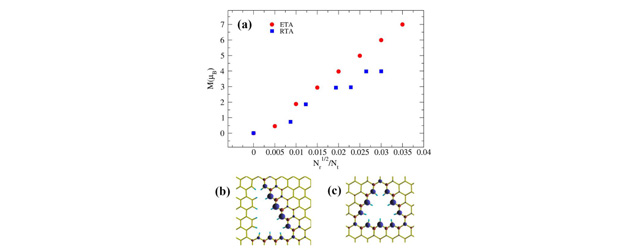Holey graphene as Holy Grail alternative to silicon chips (Vol. 50, No. 2)

Novel spintronics applications could stem from introducing holes into graphene to form triangular antidot lattices, granting the material new magnetic properties
Graphene, in its regular form, does not offer an alternative to silicon chips for applications in nanoelectronics. It is known for its energy band structure, which leaves no energy gap and no magnetic effects. Graphene antidot lattices, however, are a new type of graphene device that contain a periodic array of holes-- missing several atoms in the otherwise regular single layer of carbon atoms. This causes an energy band gap to open up around the baseline energy level of the material, effectively turning graphene into a semiconductor. In a new study published recently, Iranian physicists investigate the effect of antidot size on the electronic structure and magnetic properties of triangular antidots in graphene. The authors have confirmed the existence of a band gap opening in such antidot graphene lattices, which depends on the electron’s spin degree of freedom, and which could be exploited for applications like spin transistors.
Z. Talebi Esfahani, A. Saffarzadeh, and A. Akhound, A DFT study on the electronic and magnetic properties of triangular graphene antidot lattices, Eur. Phys. J. B 91, 308 (2018)
[Abstract]







